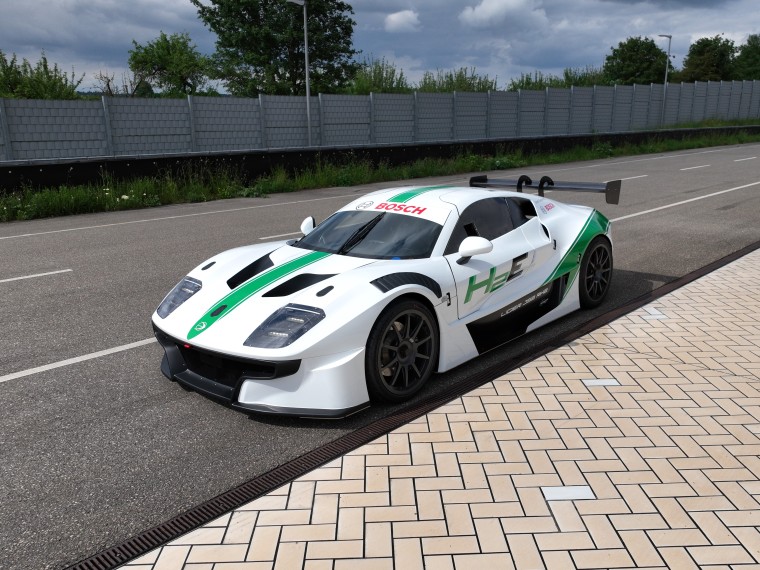Christian Hoetterges
Mobility - Motorsports
Spearheading the exit from fossil fuels in transportation, hydrogen technologies are integral to sustainability. Hydrogen, alongside electric power, is already making inroads into motor racing. Turning it into a viable option for endurance racing is proving particularly challenging. To this end, ITK joined the Bosch Engineering project team to help develop the Ligier JS2 RH2 race car.
Officially unveiled at the Le Mans 24 Hours’ centennial festivities, this demonstrator vehicle has since logged more than 5,000 kilometers of test drives. Powered by a 3.0-liter hydrogen engine with a combination intake manifold and direct injection that produces 600 hp, this trailblazing, high-performance vehicle features a comprehensive safety concept that pairs active with passive protective components. As part of the Bosch Engineering development team, ITK functional safety specialists delivered key components to help put the high-performance vehicle’s safety concept into practice.
The mission was to convert the high-performance Ligier JS2 R race car to a climate-friendly hydrogen drive. The schedule was tight, leaving little time for innovation. Hydrogen technology requires a combination of structural and electrical/electronic modifications. It took a diverse skill-set to rise to this towering challenge. To develop this safety concept, the engineering team needed expertise on the ISO 26262 standard for functional safety and experience applying specific standards and guidelines for hydrogen vehicles, one being UN GTR 13.

Bosch Engineering was responsible for the vehicle’s overall concept. It was also instrumental in designing the engine and tank as well as the comprehensive, multistage hydrogen safety system. On board to support this development team, ITK focused on the safety concept for the tank system.
The vehicle’s multistage hydrogen safety scheme encompasses the storage system with the high-pressure tanks, the pressure-regulating valves, and the pipelines to the engine and injection system. Engineers opted to partition the tank, gas-regulating components, and engine compartment. This layout and the passive ventilation via pipes and exhausts allows gases to be vented to the exterior, preventing them from reaching the passenger compartment and hot engine components. An extensive sensor array detects leaks in the system. The safety features include everything from driver alerts on the display and individual circuit breakers to full system shutdowns.
The ITK safety team worked with Bosch Engineering specialists to address the risks of using hydrogen in vehicles and come up with a safety concept for the tank system. This close cooperation with the engineers who are accountable for the combustion engine and for the vehicle as a whole was essential to this development effort.
Hydrogen propulsion systems are figuring ever more prominently in series development. The experience gained in racing hones engineers’ ability to implement these drives holistically and safely.
The ITK team has the skills to determine the safety measures needed for the given vehicle and use case, as well as the assets to support your development project.
Le Mans, Formula E, DTM, IMSA, Blancpain, drone races – whatever the challenge may entail, ITK adapts to your needs to bring our cross-racing experience to your project and develop tailored solutions to fit.